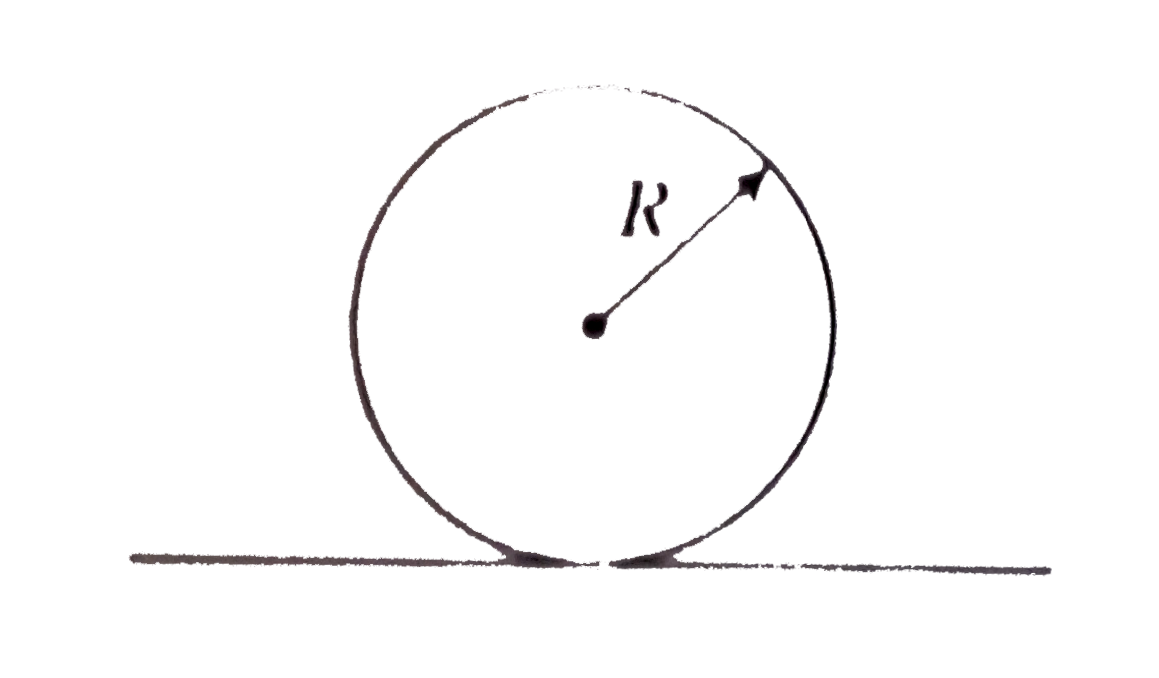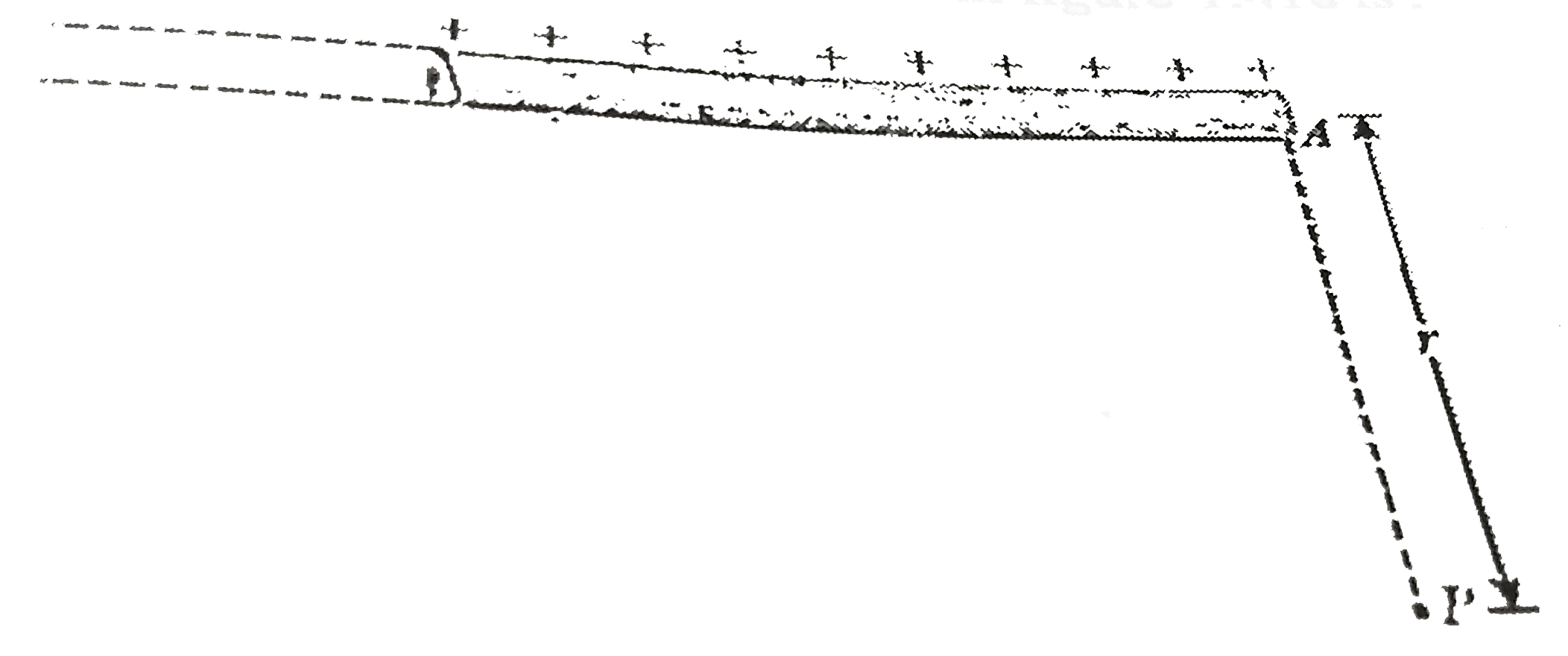A non conducting infinite rod is placed along the z−axis the upper half of the rod (lying along z≥0) is charged positively with a uniform linear charge density +λ, while the lower half (z<0) is charged negatively with a uniform linear charge density −λ. The origin is located at the junction of the positive and negative halves of the rod. A uniformly charged annular disc (surface charge density : σ0) of inner radius R and outer radius 2R is placed in the x−y plane with its centre at the origin. find the force on the rod due to the disc.

2σ0λRε0
σ0λR2ε0
σ0λRε0
σ0λR3ε0
The force on the rod due to the annular disc is equal and opposite to that on the disc due to the rod. We take an annular strip of radius r and width dr and find the force acting on it
dF=(σ02πrdr)λ2πε0r=λσ0ε0dr
∴ The force
F=σ0λε0∫2RRdr=σ0λRε0
Topper's Solved these Questions
- GMP ASSESMENTBook:FIITJEEChapter:GMP ASSESMENTExercise:Assertion & Reason
Explore 15 Videos
- GMP ASSESMENTBook:FIITJEEChapter:GMP ASSESMENTExercise:Multiple Question
Explore 58 Videos
- GMP ASSESMENTBook:FIITJEEChapter:GMP ASSESMENTExercise:Numerical Based
Explore 61 Videos
- GENERAL PHYSICSBook:FIITJEEChapter:GENERAL PHYSICSExercise:MATRIX MATCH TYPE
Explore 3 Videos
- GRAVITATIONBook:FIITJEEChapter:GRAVITATIONExercise:Numerical based Question
Explore 2 Videos
Similar Questions
A non-conducting infinite rod is placed along the 2 -axis, the upper half of the rod (lying along z≥0 ) is charged positively with a uniform linear charge density +λ while the lower half (z≤0) is charged negatively with a uniform linear charge density −λ. The origin is located at the junction of the positive and negative halves of the rod. A uniformly charged annular disc (surface charge density: σ0 ) of inner radius R and outer radius 2R is placed in the x−y plane with its center at the origin. The force on the rod due to the disc is yσ0λR8ɛ0, Find the value of y.
'(##CEN_KSR_PHY_JEE_C18_E01_037_Q22##)'
View SolutionA uniformly charged disc of radius R having surface charge density σ is placed in the xy plane with its center at the origin. Find the electric field intensity along the z-axis at a distance Z from origin :
View Solution
Knowledge Check
The dimensional formula of linear charge density λ is
A[M−1L−1T+1A]B[M0L−1T+1A]C[M−1L−1T+1A−1]D[M0L−1T+1A−1]A half ring of radius r has a linear charge density λ.The potential at the centre of the half ring is
Aλ4εoln0Bλ4π2ε0rCλ4πε0rDλ4πε0r2If linear charge density of a wire as shown in the figure is λ
 Apotential at the centre is λ2ε0Belectric field at the centre of the loop is λ2πε0RCelectric field at the centre of the loop is λ2πε0R+λ2ε0RDNone of the above
Apotential at the centre is λ2ε0Belectric field at the centre of the loop is λ2πε0RCelectric field at the centre of the loop is λ2πε0R+λ2ε0RDNone of the above
Obtain the formula for the electric field due to a along thin wire of uniform linear charge density λ without using Gauss's law.
View SolutionA semi-infinite insulating rod has linear charge density λ. The electric field atthe pointPshown in figure-1.418 is:

View SolutionA ring carries a uniform linear charge density on one half and the linear charge density of same magnitude but opposite sign on the other half.
View SolutionA rod with linear charge density λ is bent in the shap of circular ring. The electric potential at the centre of the circular ring is
View SolutionThe electric field intensity due to a thin infinity long straight wire of uniform linear charge density λ at O is-

View Solution